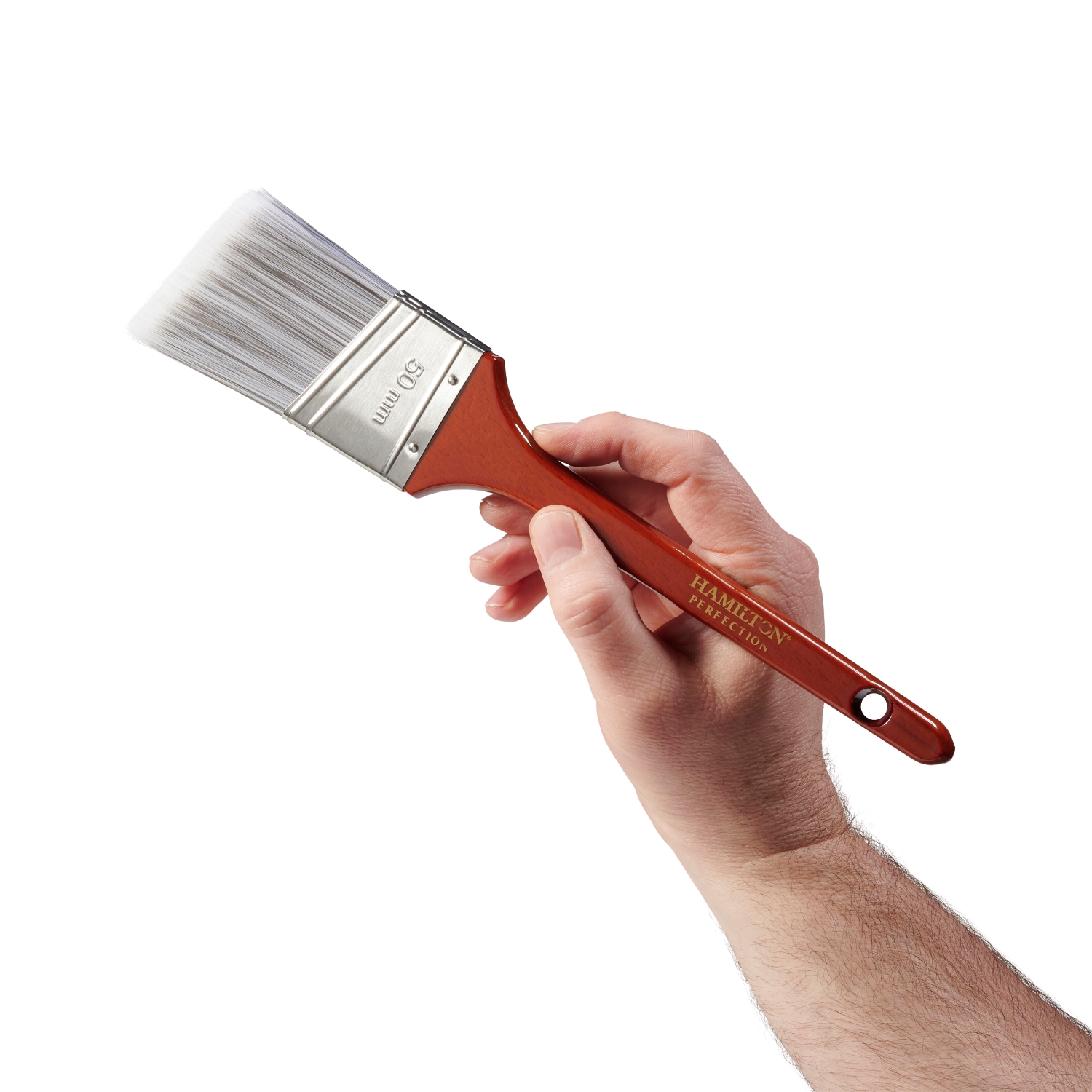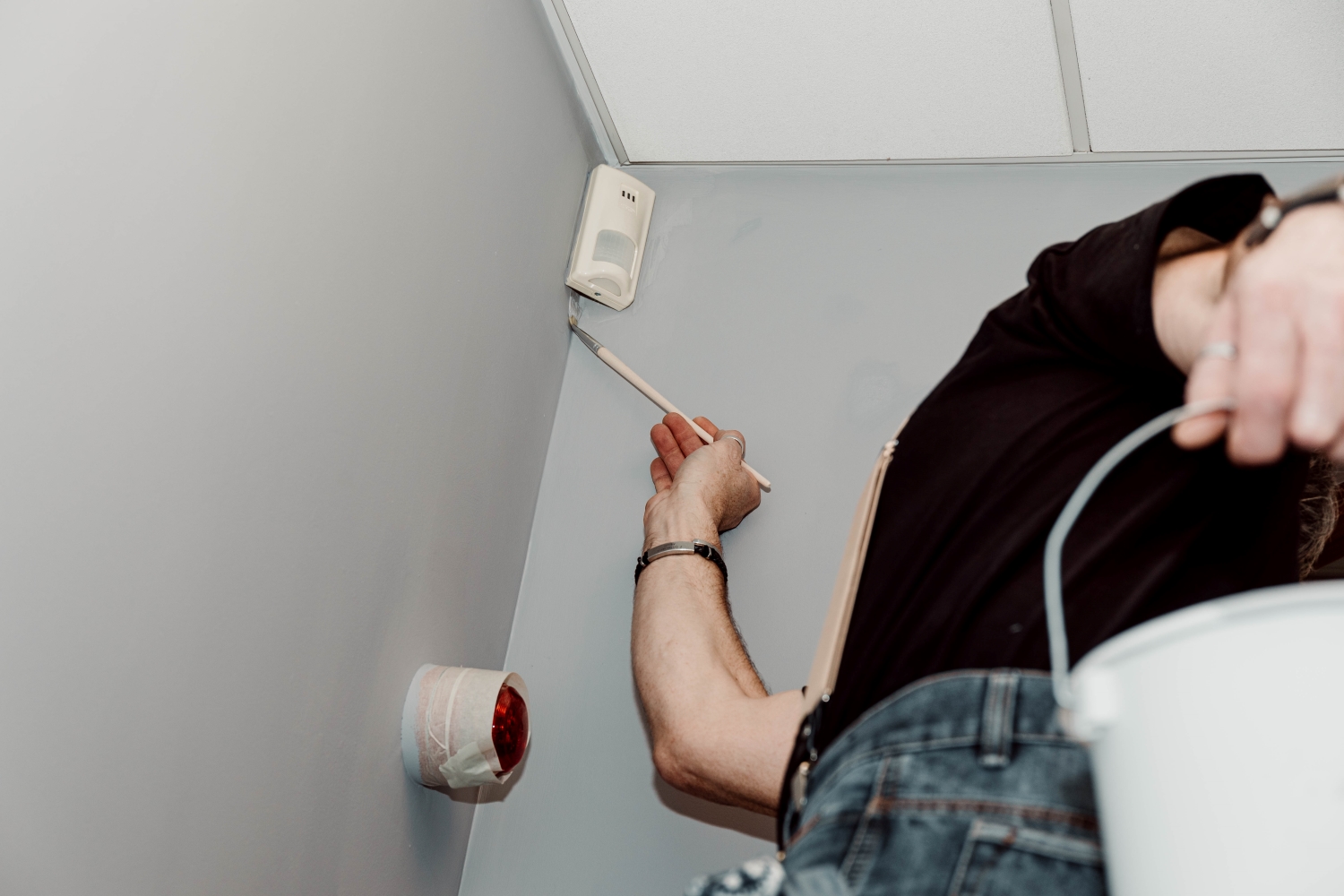
As decorators strive for perfection in their craft, they need tools which don’t just elevate their work, but which also safeguard their wellbeing. Repetitive strain injury (RSI) stands out as a concern, posing a threat to both productivity and health. Sarah Coussens, head of marketing for Hamilton Decorating Tools, explores some of the ways in which decorators can reduce the strain, including through the use of ergonomic painting tools, for a high-quality finish that doesn’t compromise on decorator health.
So much focus in the decorating industry is on the end product, delivering a finish to be proud of and that the customer is pleased with. However, with so many factors contributing to the job – from tools and paint, to preparation and the work environment – one of the elements often overlooked is the wellbeing of decorators.

Repetitive Strain Injury (RSI) is one of the most common complaints, with painting and decorating often listed as one of the most ‘at-risk’ careers. Completing repetitive tasks – often at awkward angles and up ladders – can take its toll, and it is easy to see the impact of ill health, particularly for self-employed decorators. Apart from the short-term impact on productivity and job completions, failure to consider RSI can also shorten careers, leaving many in a difficult position before they can retire.

Alleviating pressure
There are ways for decorators to mitigate the risk and the potential impact by reducing the strain as they work. It largely comes down to tool choice, with a number of practical steps that tradespeople can take.
Extension poles are a simple way to help ensure an even distribution and alleviate pressure. DIYers may often just ‘get on with it’ rather than getting the right tools for the job, but professionals understand that cutting corners could cause long-term damage.

Ergonomically designed rollers also support the wrist, such as Hamilton’s Prestige Goliath frame, which has a 90° angle in the wire to help evenly distribute pressure. A good quality double-arm frame roller has the same effect, distributing pressure to both sides of the tool.
Any repetitive movements with a brush or roller are liable to cause injury over a long period of time, so it is important to understand how different tools can affect users too. Stubby handled brushes are designed for cutting-in, while sash and angled brushes have longer handles to aid precision painting and reach.
Decorators should make sure they are using the right brush for each specific job because a flicky brush, or one that is too long or too soft, could cause pain. Some brushes can also be very heavy, and when there is in-balance (for example a heavy head of filaments with a light handle) it can lead to overcompensation during paint application.

Innovation in products and testing
Of course, manufacturers are aware of these challenges and Hamilton places a huge amount of focus on product testing and development to further support decorators. There’s a lot more that goes into designing a new premium paintbrush than many may consider. That’s why Hamilton has its own cutting-edge research and development base and laboratory facilities based in the UK and Sweden. We also work closely with decorators when designing products, making sure that they are tested extensively in real life situations, from the initial prototype stage through to final product design.
Handle type is one of the biggest areas in which we can reduce pressure for decorators. This will always come down to preference and it is impossible to have something that suits all, but Hamilton’s Perfection range has a varnished handle made from FSC® Certified wood that is traditionally shaped, offering excellent control and comfortable use.

Like all of our tools, they are tested on the job by decorators, over an extended time period, with a variety of paints. This level of in-person testing is vital to gather feedback from real life situations and help shape development.
Other wellbeing considerations
Of course, RSI is not the only wellbeing consideration for decorators and it is important to keep raising the issue of mental wellbeing in particular. One study commissioned for Mental Health Awareness Week in 2023 by Ironmongery Direct and ElectricalDirect showed that 72% of UK painters and decorators experience mental health problems due to work.
Decorators should also mitigate respiratory risks from dust, debris and paint fumes, and take action against the threat of slips, trips and falls. Simple steps such as using a paint kettle instead of stepping up and down the ladder will help to reduce risks, as will careful use of knives and blades.
Through awareness, education and by taking practical steps to reduce risks and alleviate pressure, decorators can undoubtedly make progress to support their wellbeing in the workplace. Manufacturers will continue to support too, with product development, testing and advice. Our advice is simple; take time to understand the issues, choose premium tools that are fit for the job and reduce your risks.
For more information, visit the Hamilton Decorating Tools website www.hamiltondecoratingtools.co.uk.







